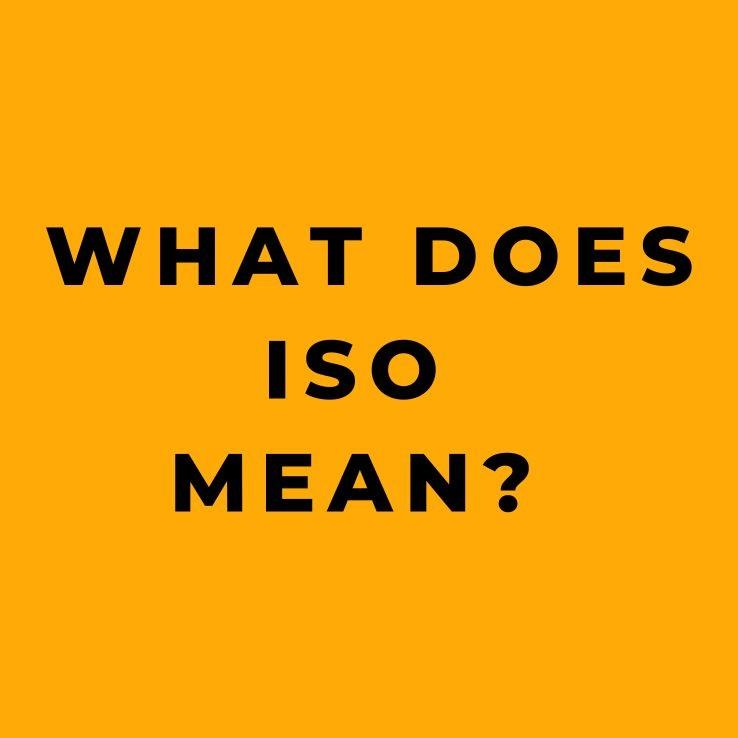Introduction
The International Organization for Standardization (ISO) standards are instrumental in promoting quality, consistency, safety, and efficiency across various industries worldwide. These standards have become the cornerstone of modern business practices, providing a common language and set of guidelines that organizations can follow to ensure excellence in their products and services. This article delves into the essence of ISO, the key ISO standards utilized by organizations, and the certification processes and benefits of implementing these globally recognized standards.
What is ISO?
ISO is an independent, non-governmental international organization that develops and publishes standards for a wide range of products, services, and systems. The name ISO is derived from the Greek word ‘isos,’ meaning equal. Established in 1947 and headquartered in Geneva, Switzerland, ISO’s mission is to facilitate international trade by providing common standards that can be implemented by organizations globally.
ISO standards specify the requirements, specifications, guidelines, and characteristics that ensure quality, safety, and efficiency. By adhering to ISO standards, companies can access international markets, reduce costs through improved processes, and assure customers of consistent quality across different regions.
A Century of Standardization: The History and Evolution of ISO
The origins of the International Organization for Standardization (ISO) can be traced back to 1926 when it began as the International Federation of the National Standardizing Associations (ISA), focusing primarily on mechanical engineering. During World War II, ISA was disbanded, but it was re-organized under the current name, ISO, in 1946. The name “ISO” is derived from the Greek word “isos,” meaning “equal,” reflecting the organization’s goal of creating equal standards. ISO is a voluntary organization, and its work is carried out by over 2700 technical committees, subcommittees, and working groups, each headed by a Secretariat from one of the member organizations.
ISO was officially founded on 23 February 1947 by delegates from 25 countries, with the unified goal of ensuring products and services are safe, reliable, and of good quality. The first ISO standard was published in 1951, and over the decades, ISO created committees and published standards for various fields, including quality management, environmental quality, information security, social responsibility, and more. Notable standards include ISO 9001, published in 1987, and ISO 14001, published in 1996. By its 70th anniversary in 2017, ISO had published over 22,401 International Standards and had members from 161 countries.
As of November 2022, ISO has published over 24,500 international standards covering almost all aspects of technology and manufacturing, except for electrical and electronic engineering, which is handled by the International Electrotechnical Commission (IEC). Headquartered in Geneva, Switzerland, ISO works in 167 countries as of 2023, with 811 Technical committees and subcommittees responsible for standards development. The organization’s membership consists of different national standards bodies, with each country having only one member. As of February 2023, the ISO has developed over 24,676 standards, covering diverse fields from manufactured products and technology to food safety, agriculture, and healthcare.
Overview of Major ISO Standards
Some of the most widely used and recognized ISO standards include:
- ISO 9001 – Quality Management System: Focuses on customer satisfaction and continual improvement, helping organizations demonstrate their ability to consistently provide products and services meeting customer and regulatory requirements.
- ISO 14001 – Environmental Management System: Provides a framework for improving environmental performance through efficient use of resources and waste reduction.
- ISO 45001 – Occupational Health and Safety: Aims to protect employees, reduce workplace risks and accidents, and ensure regulatory and policy compliance.
- ISO/IEC 27001 – Information Security Management: Establishes requirements for information security management systems.
- ISO 22000 – Food Safety Management: Covers all organizations in the food chain, ensuring safety from farm to fork.
- ISO 13485 – Quality Management for Medical Devices: Outlines conformity assessment requirements for medical devices.
These standards provide guidelines, requirements, and best practices that allow organizations to improve processes, meet legal obligations, reduce environmental impacts, and demonstrate credibility to customers and stakeholders.
ISO 9001 Quality Management System
One of the most globally implemented ISO standards, ISO 9001, focuses on quality management systems. The key aspects include:
- Customer Focus: Identifying and meeting customer needs, with continual improvements to enhance satisfaction.
- Leadership: Requiring management commitment and active leadership for implementation.
- Process Approach: Managing interlinked processes as a system for effectiveness and efficiency.
- Evidence-Based Decision Making: Basing decisions on analysis and evaluation of relevant data and information.
The benefits of obtaining ISO 9001 certification are numerous, including increased efficiency, enhanced customer satisfaction, improved quality of products and services, global recognition, competitive advantage, and compliance with regulatory requirements.
Obtaining ISO 9001 Certification
The process for obtaining ISO 9001 certification involves understanding the standard requirements, planning actions, providing employee training, performing internal audits, taking corrective actions, engaging a certification body for audits, and conducting periodic surveillance audits for recertification.
ISO 14001 Environmental Management
ISO 14001 provides globally recognized requirements for an effective environmental management system (EMS). Implementing ISO 14001 allows organizations to identify and manage environmental impacts, improve resource efficiency, reduce waste, comply with laws and regulations, set targets for performance improvement, and demonstrate commitment to sustainability.
The key requirements include environmental policy, planning actions, implementation of controls, monitoring, measurement, analysis, evaluation, and continual improvement.
Benefits include reduced environmental footprint, legal compliance, cost savings, improved community relations, and access to new markets where certification is mandatory. Periodic audits by accredited bodies are required to assess conformance.
More Interesting Facts About ISO Standards
- The first ISO standard published in 1951 was ISO/R 1 on standardization of screw threads. This may seem mundane but helped enable global interoperability.
- While ISO develops standards, it does not regulate or enforce their implementation. Adoption of ISO standards remains voluntary, though often required by industries.
- When ISO was formed, its headquarters were located in Geneva, Switzerland to take advantage of the city’s neutral political status as well as presence of international organizations.
- ISO standards are developed through industry-wide collaboration between experts across countries. However, each country gets one vote regardless of size or population during the consensus process.
- ISO standards are copyrighted documents requiring purchase for access, with some exceptions. This helps fund ISO operations from 165 member countries without relying on government funding.
- The ISO committee responsible for developing ISO 9001 quality management standard is called TC 176. This technical committee was formed back in 1979.
- In the ISO hierarchy, subcommittees of experts can work under technical committees to focus on developing standards for specific areas or industries.
- The popular ISO shipping container standards help enable intermodal transport of containers via ships, trucks and trains – critical for global trade.
- ISO does not test or certify products itself. It relies on independent National Accreditation Bodies for this purpose.
- ISO is constantly developing new standards as technology evolves. For example, ISO published a standard on artificial intelligence called ISO 23894 in 2021.
Conclusion
In today’s globalized world, ISO standards have become indispensable for establishing quality systems, ensuring sustainability, managing risks, and demonstrating credibility. Organizations can leverage ISO standards like ISO 9001 and ISO 14001 to improve processes, satisfy customers, gain competitive advantage, and unlock new opportunities for growth. With the expertise of accredited bodies, implementing and attaining ISO certifications has become a hallmark of commitment to quality, safety, and reliability.
By embracing these standards, businesses not only align themselves with global best practices but also position themselves as leaders in their respective fields. The ISO standards serve as a testament to an organization’s dedication to excellence, fostering trust and confidence among consumers and stakeholders alike.
References:










